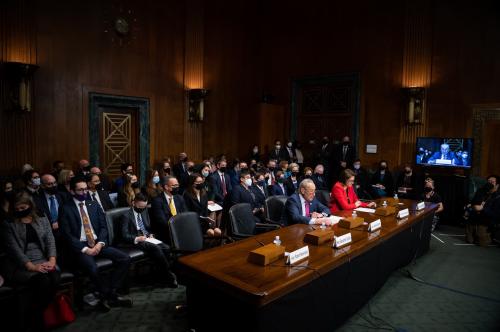It has become conventional wisdom that contemporary American politics is deeply and debilitatingly polarized. But is this supposition true? If it is true, how and to what extent is it true? And what, if anything, can and ought to be done about it?
Scholars and political observers generally agree on three key points about polarization. First, the U.S. Congress is more polarized ideologically than it was a generation ago: The ideological overlap between the parties has all but disappeared, and the rise of “safe” districts with partisan supermajorities has tended to push politicians away from the center. Second, while activists in both parties have long been polar opposites, the ideological gap between them has widened in recent decades. And third, with declining regulation of the media, mass media outlets have become more numerous, diverse and politicized. All three phenomena, moreover, are mutually reinforcing.
If all this is true—and it is—what’s left to argue over? The principal bone of contention is the extent to which polarized views among political leaders and activists are reflected in the population at large. Even here there is some agreement on key trends. While there is no evidence of significant change in the electorate’s overall ideological balance during the past three decades, fewer self-identified Democrats or liberals vote for Republican candidates than they did in the 1970s; fewer Republicans or conservatives vote for Democratic candidates; and rank-and-file partisans are more divided in their political attitudes and policy preferences. Also, religiosity (not to be confused with the denominational hostilities of the past) is becoming a telling determinant of political orientation and voting behavior: All else equal, the more often individuals attend church, the more likely they are to regard themselves as conservatives and vote Republican.
The unsettled questions are about how far or how deep these trends go, and how much difference they make to the overall functioning of the political system. Do substantial segments of the electorate, not just political elites, tend to cluster consistently into opposing ideological camps that differentiate the respective agendas and candidates of the political parties? The answer is a mixed one: As we illustrate below, the severity of the country’s “culture wars” is overstated, but some significant fissures have opened in the nation’s body politic, and they extend beyond politicians and partisan zealots.



Commentary
The Great Divide: Polarization in American Politics
November 1, 2006